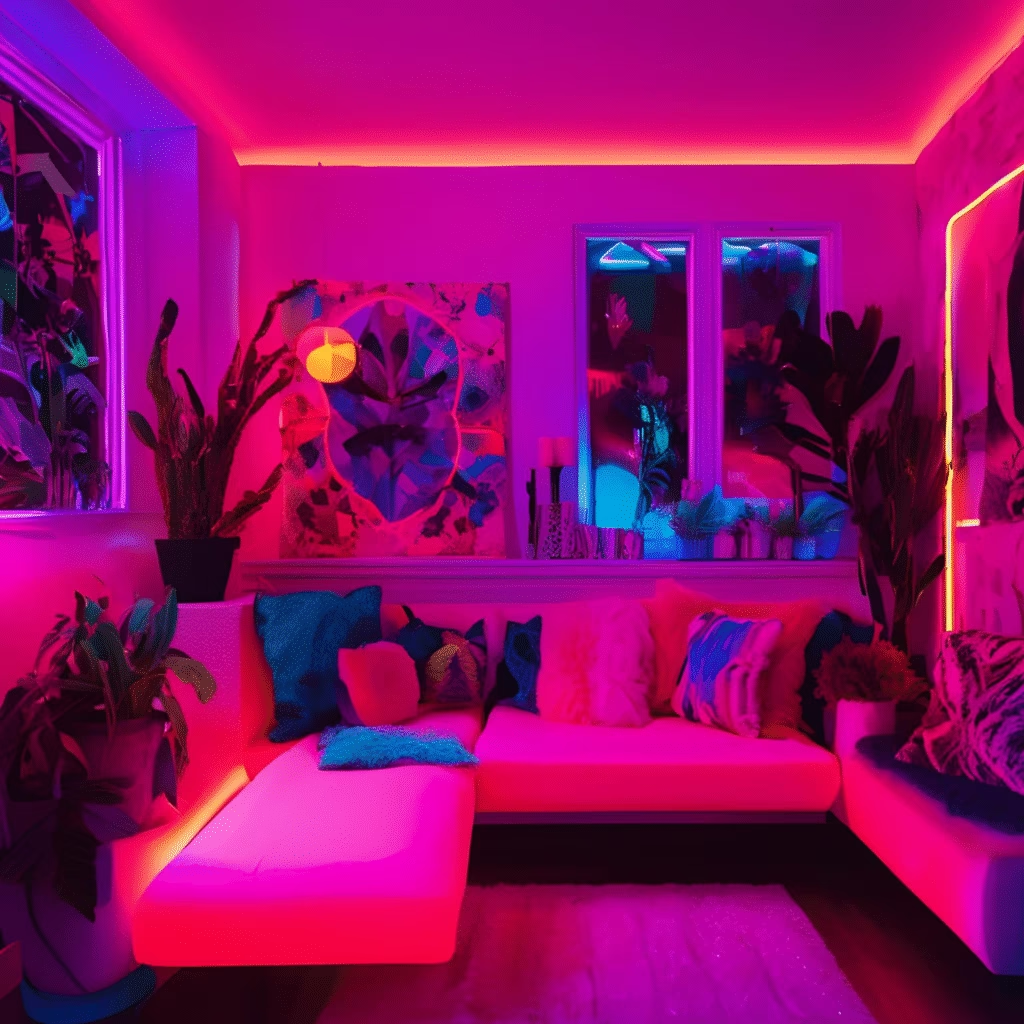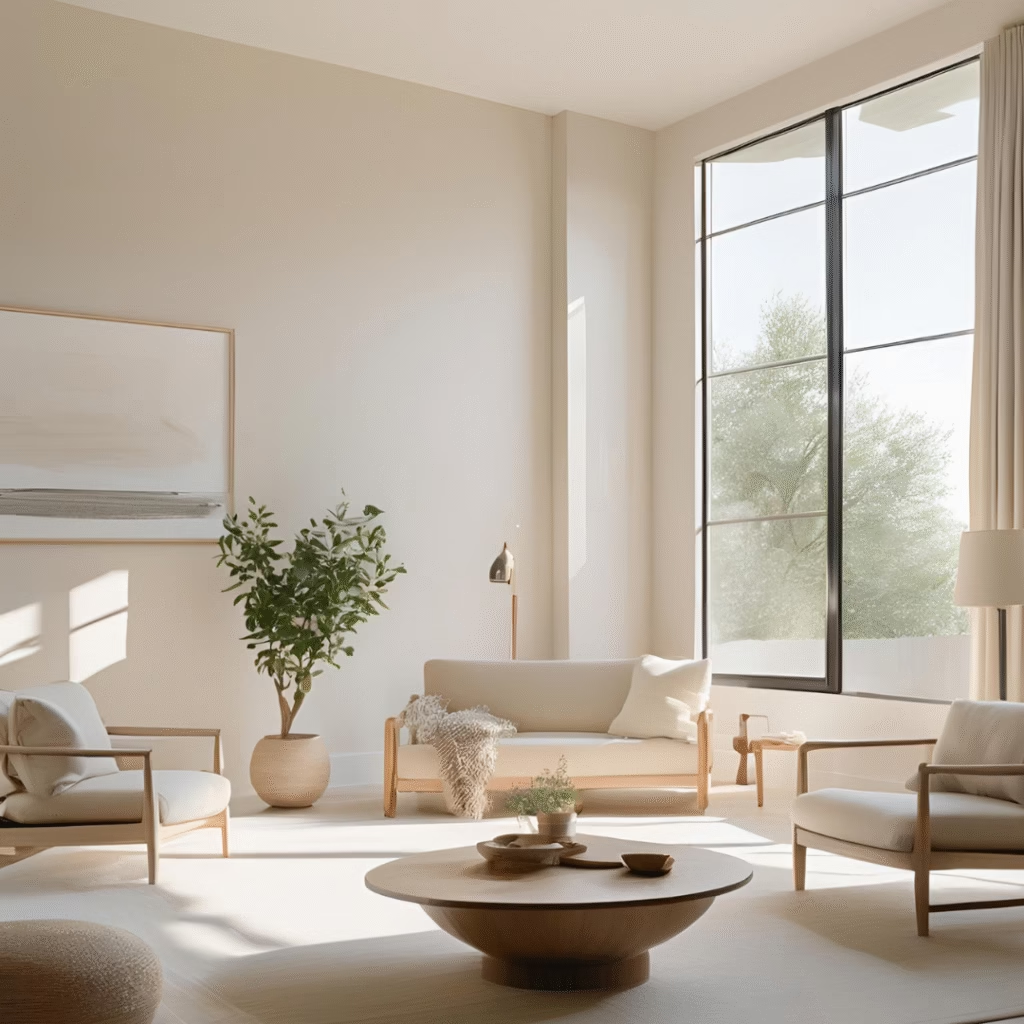Table of Contents
Introduction
All set to explore a maximalist interior design honoring uniqueness and originality and free from the restrictions of minimalism? Your name is called by maximalist interior design. This book will bring you through all you need to know to design a lively, varied living environment that really reflects who you are.
What is Maximalist Interior Design?
The Philosophy Behind Maximalist
Whereas minimalism emphasizes simplicity and restraint, maximalist welcomes variety and richness. It’s about assembling goods you love, not about stuffing your place with haphazard objects. Maximalist invites you to use strong colors, complex patterns, and a range of materials to highlight your own style.
Personal Expression and Creativity
Maximalist interior design helps you to be really yourself without apology. Every item in your house should either just provide you delight, represent a memory, or tell a narrative. The intention is to design a rich, interesting surroundings that seem especially yours.
Layering, Mixing, and Matching Elements
Maximalist interior design is fundamentally layered in its tactics. Harmonious but dynamic environment can be created by carefully combining and matching many elements. Whether you mix several textiles or arrange opposing furniture pieces side by side, every layer gives your house more depth and appeal.
Learn More about Luxury Interior Design ideas 2024: Elevate Your Elegance
Key Elements of Maximalist Design
1. Bold Colors
Vibrant Color Palettes
Maximum design is based mostly on color. Choose a palette that speaks to your style, and don’t hesitate to go strong. Bright colors like fuchsia, orange, and electric blue provide vitality and excitement; jewel tones, including emerald green, sapphire blue, and ruby red, offer a rich sense.
Examples of Jewel Tones and Bright Hues
Use brilliant colors for accent items like cushions or artwork; use jewel tones in big areas like walls or sofas. These colors’ contrast will help your area come alive.
Tips on Using Color
Using strong colors calls for careful application of color balance. Repeating some colors across the room will help to guarantee a harmonic flow. For example, throw pillows or artwork can reflect a vivid blue wall, so uniting yet energizing the space.
2. Layered Patterns
Role of Mixing Patterns
A trademark of maximalist design is a pattern. Combine florals, stripes, geometric forms, and animal prints without holding back. Finding a common thread—such as a shared color or motif—helps to link the patterns.
Types of Patterns to Combine
Try several designs to find which suits you most. Unified by a shared color scheme, a flowery print on your drapes, a striped rug, and animal print throw pillows will produce a harmonic but unique vibe.
Techniques for Finding Common Threads
Look for color or design feature parallels when combining patterns. For instance, use designs with different blue tones to establish cohesiveness if your main color is blue.
3. Eclectic Furniture
Mixing Furniture Styles and Eras
Maximalist promotes you to combine eras and furniture designs. Sitting next to a baroque-style table, a mid-century modern chair creates a pleasing and interesting juxtaposition. The space should be balanced yet varied.
Examples of Vintage Finds, Modern Pieces, and DIY Projects
To give your room character, mix modern items, historical relics, and even do-it-yourself crafts. Drawing the eye and providing visual appeal also depend much on unusual forms and silhouettes.
Importance of Unique Shapes and Silhouettes
Seek out furniture with unique forms and designs. These elements will be unique and center points in your maximalist design.
4. Art and Accessories
Significance of Art in Maximalist Interior Design
Maximalist interior design depends on art. To give your room character and depth, create gallery walls loaded with pictures, paintings, and ornamental artifacts.
Tips for Creating Gallery Walls
Create a layered appearance with varying sized and styled frames. To keep cohesiveness, group art works depending on a shared topic or color palette.
Suggestions for Personal Accessories
Accessories with objects reflecting your passions, including books, sculptures, and trip mementos. Better still is the more varied and personal the collection is.
5. Textural Variety
Role of Textures in Creating a Rich Experience
Textures give your space character and depth. Combine materials such as velvet, silk, leather, and wood to produce a visually pleasing and enjoyable physical experience.
Recommended Materials
To create warmth and comfort, include soft throws, colorful pillows, and plush carpets. Combining textures offers a sensory experience in addition to improving appearance.
Importance of Layering Textures
Laying several textures produces a warm and inviting environment. A leather sofa with velvet cushions and a wool throw, for instance, can transform your living room into an opulent and inviting space.
6. Statement Lighting
Impact of Lighting on Maximalist Interior Design
A maximum space can be made or broken by lighting. Choose statement light fixtures that themselves act as works of art to accentuate your décor.
Suggestions for Statement Light Fixtures
Large pendant lights, sculptural floor lamps, and chandeliers will accentuate your space’s beauty and sophistication.
Ideas for Using Colored or Patterned Lampshades
To accentuate the varied ambiance even more, think about utilizing patterned or colored lampshades. The whole design can be much improved by these little details.
Tips for Achieving Maximalist Interior Design
Start Small
If you recently discovered maximalist, begin by adding a few striking pieces to your current décor. This will enable you to progressively move into a more maximalist approach from your comfort level with the style.
Create Zones
Clearly distinguish several sections of a room with furniture and décor. This can provide organization and assist to control the visual anarchy. To designate a seating area or a bookcase separating the dining from the living room, for instance, lay a big rug.
Stay True to Yourself
Maximalist is about individual expression. Select objects that capture your own style and speak to you. Concern yourself with following design guidelines; instead, have fun and allow your imagination to run wild.
Balance
Aim for balance even if maximalist lives on plenty. Sort related objects and leave some breathing room to prevent sensory overload. For instance, balance a busy patterned sofa with solid-colored cushions and a basic coffee table.
Conclusion: Maximalist Interior Design
An interesting and expressive style that lets you honor your own taste is maximalist interior design. Embracing strong colors, layered patterns, unusual furniture, and personal accessories will help you to create a lively environment that captures your own style. Recall that the core of maximalist is pleasure and self-expression; hence, let your imagination go wild and transform your house into a real mirror of who you are.
Ready to use maximalist interior design to completely change your environment? Start now and see how personality, color, and texture bring your house to life. Don’t hold back; embrace the strong and vivid world of maximalist; your living environment should represent you.
Learn More: Click Here
FAQs of Maximalist Interior Design
What is Maximalist interior design ?
Embracing strong colors, patterns, and mixed décor, the maximalist interior design seeks to create a dynamic and lively space. Maximums stresses profusion, complexity, and personal expression, while minimalist design stresses simplicity and restraint.
How might I begin including maximalist interior design in my house?
Start by adding some strong pieces—such as colourful couches, patterned rugs, or striking artwork—into your current décor. Add more gradually as you grow at ease with the style. Recall the secret is to strike a mix between cohesiveness and variation.
Can maximalist fit in small areas?
Yes! One can fit maximalist in any scale of space. In smaller spaces, concentrate on displaying your décor using vertical space and layering fabrics. Strategic lighting and mirrors may help a place seem more lively and bigger.
How might I combine designs without running across conflicts?
Look for common threads like colors or motifs that bind designs together if you want them mixed properly. Combining geometric patterns with floral prints in a common color palette, for instance, produces a harmonic but intriguing effect.
Should I follow a particular color scheme exactly?
Although a coherent color palette can assist to unite a maximalist design, it is not a strict need. Let your own taste lead you and play about with a range of colors. The intention is to establish a place that reflects your individuality and seems pleasant.

